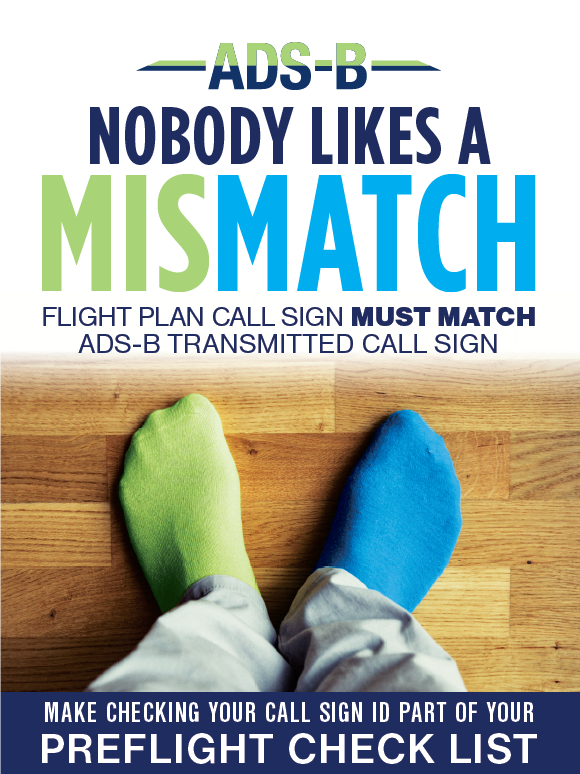Choosing Equipment with Changeable Call Signs
Should you purchase an ADS-B transmitter that allows you to enter a call sign?
ADS-B transmitters may be purchased with or without the pilot changeable call sign feature. Most general aviation pilots use their aircraft registration (N number) as the call sign for air traffic control (ATC) communications and filing flight plans. Commercial operators routinely use call signs that are not related to the aircraft registration but relate to the activity of the operation (United, Delta American, etc.). 14 CFR 91.227(d)(8) specifically addresses call sign requirements.
If you always use your plane's registration number for ATC communication, you can use an ADS-B transmitter with a non-changeable call sign. If you're not sure, use the questions below to determine what kind of equipment you need.
If you answer yes to any of the questions below, you need an ADS-B transmitter with a pilot-changeable call sign feature.
Do you use an ICAO-compliant call sign to communicate with ATC? (e.g. DAL123)
Do you use a local area call sign or special call sign to communicate with ATC? (e.g. RDDL123 or TRPR1)
Do you conduct volunteer flights for organizations such as Angel Flight or Animal Rescue Flight and prefer to use their ICAO-compliant call sign (e.g. NGF230 or ARF223)?
Does your flight planning company provide a unique call sign for privacy reasons (e.g. DCM123)?

To learn more about what Call Sign Mismatch is and how you can avoid it, please see our “Know Your ADS-B” page.
